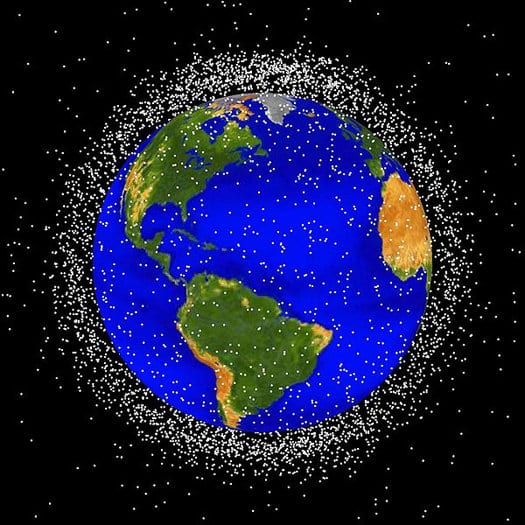NASA experts are examining the trajectory of a mass of material that passed not far from the space station yesterday (Thursday). In the meantime, due to a technical fault, the launch of a satellite that will observe the fractures from a height of 630 kilometers and overcome the radars currently doing the job from the ground is delayed

A chunk of space debris from the Chinese satellite that exploded in January 2007 passed by the International Space Station yesterday (Thursday). Six astronauts, members of the 24th crew, are currently staying at the station. A few tense days passed for NASA personnel after they recognized that the rupture was approaching, until on Thursday it passed by at 17:45 GMT.
Initially, experts at NASA's control center in Houston, Texas, considered asking the astronauts to enter the Soyuz spacecraft used as lifeboats. They calculated that the debris would fly by the station and come within 8 kilometers of the station, far enough to not even require the astronauts to turn on one of the boosters to raise the space station's orbit to avoid the debris. In fact the calming alert was broadcast from Houston just an hour before the expected passage.
"All three of our surveillance facilities decided that this was a "green" assassination. Therefore, we do not believe that there is any danger of a collision and we do not require you to find shelter in space," said experts from the Astronaut Control Center.
Normally, the station hovers at a height of 354 km above the surface of the earth, however, in cases of fear of a collision, NASA prefers to raise the station so that the station is at least 25 kilometers away from the dangerous factor on each side of it, but such a step is only taken when the risk of injury is higher than -1 to 10,00.
NASA's Orbital Debris Department said this month that over 4,700 space missions have been carried out since the beginning of the space age, but only ten of them are responsible for about a third of all objects currently cataloged on the list of space debris that threaten satellites and launchers. Six of them happened in the last decade. Debris from Chinese, American and those launched at the time by the Soviet Union make up the majority of waste as of today. About 19 thousand objects larger than ten centimeters are being tracked.
As part of the effort to monitor inactive satellites and space debris, the American Air Force was supposed to launch a satellite at the beginning of July that would be dedicated to monitoring the debris from space. The SBSS-Space-Based Space Surveillance satellite, whose total cost is 500 million dollars, will monitor the fragments below from a height of 630 kilometers. The launch was delayed due to a software fault in the launcher.

7 תגובות
To Avi Ohion. An answer that is not written anywhere.
After all, they have sails there in Suez.. and pedals with which they pedal when there is no wind.. For emergencies, the Russian space program even installed special emergency oars made of extremely light fins which they pull out and start rowing to the target just like on the Volga.
Until the 18th century, steel anchors were still used that were converted for the purpose from pirate ships.. They would swing two astonating together in the hope of catching the ends of the space station
Today the anchors are made of aircraft aluminum alloy and carbon and fired with the help of RPG missiles that were converted for this purpose.. After the anchor has penetrated the sheath of the space station and is well caught in it, they pull themselves to the station with the help of a pulley.
After that, they make Turkish coffee in a pincan and smoke hookah and celebrate the success of the operation.
My father has a question that is not written anywhere, how do you get to the station in a Soyuz spacecraft, it is far away, how are they able to fly for days, that is, how do they know how to dock
For Avi Ohion, the names appear in the previous article about the space station. Once you ask questions whose answers do not appear anywhere.
What do you want us to answer for you Sasha Natasha Masha Sergey John and Joe?
It's not enough that we polluted KA, now space too...
I wonder what the names of the astronauts currently manning the station are
Let them start recycling..
1 for how much?